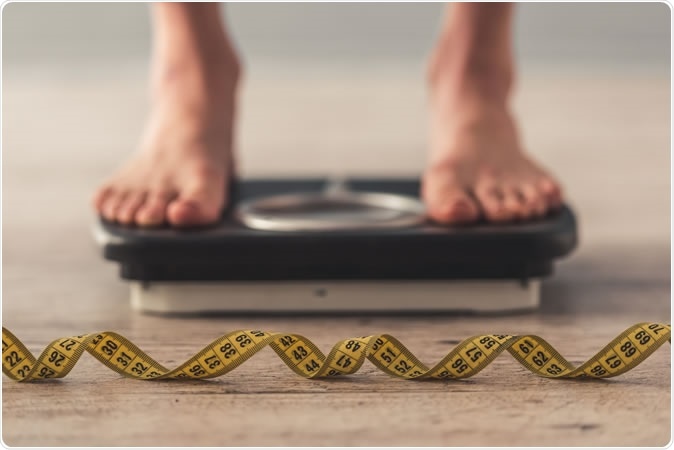Increasing numbers of young children in the UK and Ireland just might be developing anorexia nervosa, a dangerous eating disorder. A new study published online in the journal BMJ Open shows that the number of 8-12 year olds with this condition is now two times as high as in 2006, when it was 1.5/100,000.
This is referring only to those who were treated in medical centers or clinics. If all the eating disorders that are presently clubbed under anorexia nervosa are included in this diagnosis, the figure would have comes to 2.1/100,000. However, current estimates show it to be 3.2/100,000, according to the new study.
This possible upward trend in younger children over time is a worrying one, especially as these children have not reached their teens yet, which is when the disease commonly peaks. The current incidence rate was estimated using hospital and specialist eating disorder clinic records which are likely to be a more dependable source of actual prevalence. Earlier researchers used GP records from at least ten years back, which may not be as accurate.

Image Credit: VGstockstudio / Shutterstock
Anorexia nervosa
Anorexia nervosa is a life-threatening and long-term eating disorder that has the highest death rate among all psychiatric conditions. It is especially common in young women. The affected individuals value weight control so highly that they focus on efforts to maintain a very low body weight and an ideal body shape, often at the cost of their quality of life and their health. It may lead to extreme weight loss, of course, but also anemia, dizziness, thinning or falling hair, menstrual stoppage, cold intolerance, abnormal heartbeat rhythms, low blood pressure and swelling of the limbs.
The study and its findings
The current study used the monthly records that are given in to the Child and Adolescent Psychiatry Surveillance System by psychiatric specialists in the UK and Ireland. They used records submitted for 8 months in 2015, on 8-17 year olds, who had a first-time diagnosis of anorexia nervosa. They obtained information on 305 new patients who were diagnosed with this condition during this period.
Over 90% of these patients were girls, 70% were English, and 92% were white. The mean age of diagnosis was 14.6 years, and on average the patients had about 83% of their expected body mass index (BMI).
This information was used to estimate the number of new cases in this age group, which is called the incidence. They calculated that the incidence of this condition in girls is about 26/100,000, overall, while boys had a much lower rate of 2/100,000. Beginning with age 8, more and more cases were reported each year.
Thus the incidence was 4/100,000 among 11 year olds, and a steep rise to 12/100,000 for 12 year olds.
The greatest number of diagnoses occurred at about age 15 in girls, with an incidence of 58/100,000, and 16 in boys (5/100,000). In both sexes, the incidence fell to half or less by the age of 17 years. Overall, we may expect 14 new cases to be diagnosed among teenagers and children between 8 and 17 years. When compared with earlier figures, the incidence among younger children under 12 years seems to have risen.
Implications
The reason for this trend towards an increased incidence in younger children is not known, given that the study was observational in design. Some lack of accuracy in the estimate calculation is possible given the fact that some children may not have been referred by their GPs or may never have been seen by medical professionals at all. However, the sample was large and drawn from several locations over the country, and the basis was expert-confirmed diagnoses. As such, the scientists expect that the findings will be relevant in other developed countries with an equivalent level of income.
The researchers conclude that this earlier age of onset of anorexia nervosa, suggested by the current study, is reason for future work on how to intervene earlier to prevent this condition.
Journal reference:
Incidence of anorexia nervosa in young people in the UK and Ireland: a national surveillance study. Hristina Petkova, Mima Simic, Dasha Nicholls, Tamsin Ford, A. Matthew Prina,Ruth Stuart, Nuala Livingstone, Grace Kelly, Geraldine Macdonald, Ivan Eisler,Simon Gowers, Barbara M. Barrett, and Sarah Byford. BMJ Open. 2019;9:e027339. doi:10.1136/bmjopen-2018-027339. https://bmjopen.bmj.com/content/bmjopen/9/10/e027339.full.pdf